Stories
Max Thomson
1945-
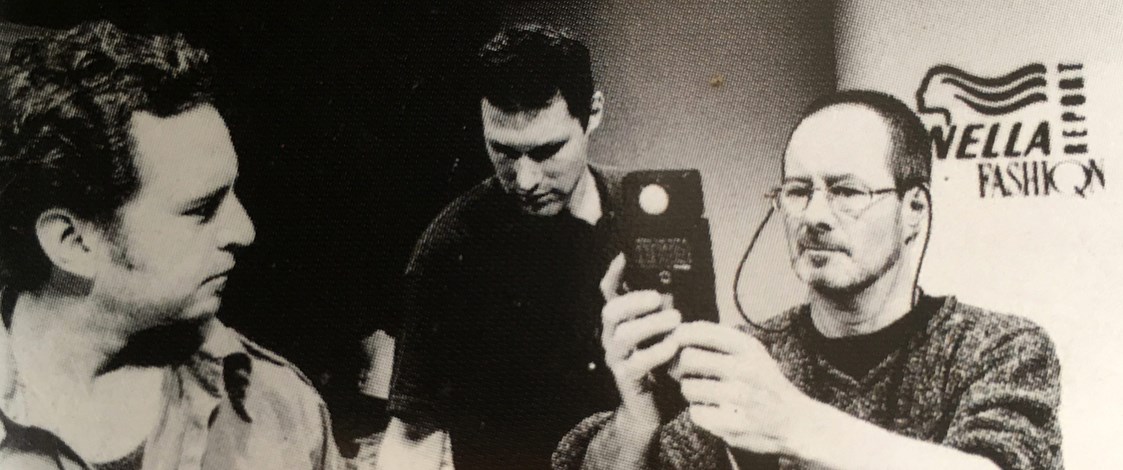
Max Thomson may have started his career in front of the camera, but the 35 years he spent behind a camera as a photographer and director have had a lasting impact on the New Zealand fashion scene.
Max was born in Wanganui, moving to Auckland with his family when he was a teenager. His mother was a keen amateur photographer with a talent for capturing family life. Her only published photo (of Lonnie Donegan in 1961) appeared much later in the 2010 book, Live: Gigs That Rocked New Zealand which also included a shot that Max had taken of the Four Tops for Playdate magazine.
Growing up, Max wasn’t particularly interested in photography. His great loves were painting and - like many other teenage boys - rock 'n' roll music. He played drums, firstly in The Strangers and then in 1964 he joined The Pleasers. Dressed in matching 'Beatles' suits, they played Beatles covers in a club in Little Queen Street aptly named the Beatle Inn. In November they were invited to be the resident band on the TV show Let’s Go. Overnight they became household names.
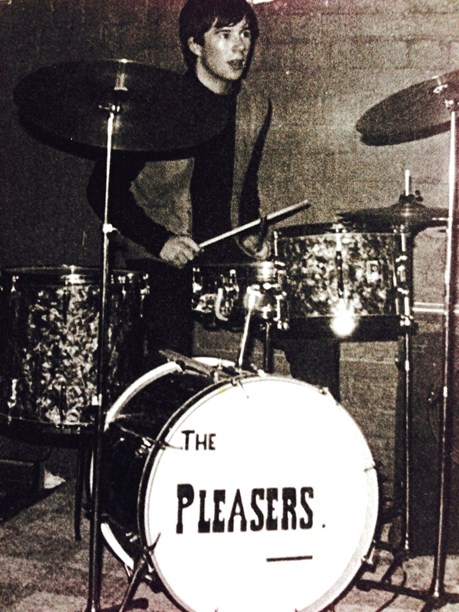
Max Thomson in The Pleasers, 1965. Image © Max Thomson.
After a whirlwind year of TV shows and local tours, the band "disintegrated". Max was 20 years old. Deciding he wasn’t a good enough drummer to make a career of it, he started to think seriously about photography. "We used to be photographed all the time in the band and it must have subconsciously sparked an interest. And there was quite a big shift to a hard, black and white photography style, rather than the full tone that had gone before."
Max started by photographing other bands, but he was also interested in fashion. He was working in a jewellery factory but spent his free time taking photographs and set up his own darkroom at home. When he decided he wanted to do this full time he didn’t join one of the large photography studios, but rather put together a portfolio and looked for possible sources of work. One of these was Playdate.

Photo from Max's portfolio, 1960s. Image © Max Thomson.
Under the editorship of Des Dubbelt, Playdate was a breath of fresh air in the publishing industry. It wasn’t a fashion magazine, but gave fashion a voice, sitting alongside music, movies and art and pitched at a young urban audience. Offset printing allowed Des to move away from conventional layouts - and conventional photography. Instead of relying on formal studio photographers, Des employed photography students from Elam Art School. In an interview for Planet magazine (summer 1994), Des told Russell Brown that he was taught that you’ve got to hit people visually. "A good fashion spread, especially out on location ... is very visually effective. Formal fashion photographers weren’t good at it." Influenced by London photographers such as David Bailey and Terence Donovan, Playdate’s photoshoots took place on the street or in workrooms and coffee bars. Max’s photographs followed the same aesthetic and soon appeared on the pages of Playdate.
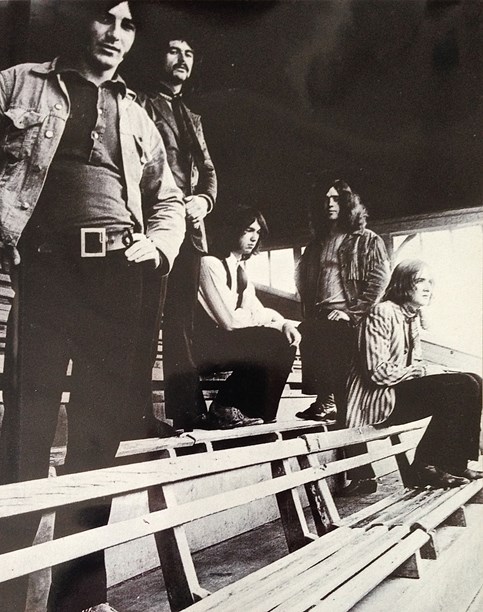
Photo of New Zealand band, The Fourmyula, by Max Thomson for Playdate magazine, December 1969/January 1970. Image © Max Thomson.
Des also put Max in touch with Bob Harvey, co-owner of the Auckland advertising agency with cool cachet, McHarman and Associates.
"It was all young people," Max recalls. "Warwick Brock, the creative director, had been in a band. Dick Frizzell and Chris Pearson were working there and I seemed to fit in really well. It was good fun, and fashion was what I wanted to do." They employed photographers as freelancers and Max was a regular along with others such as Roger Donaldson.

Photo by Max Thomson of Crimpers' hairdressers Stanley, Chrissie and Allen, Playdate, August 1972. Image © Max Thomson.
There was an abundance of cheap studio space in Auckland at the time, often what seemed like small ballrooms in large villas. Max had a studio in Remuera, then Parnell and when that villa was demolished, he worked out of Hill Thomas Jensen - a large photography studio on Airedale Street.
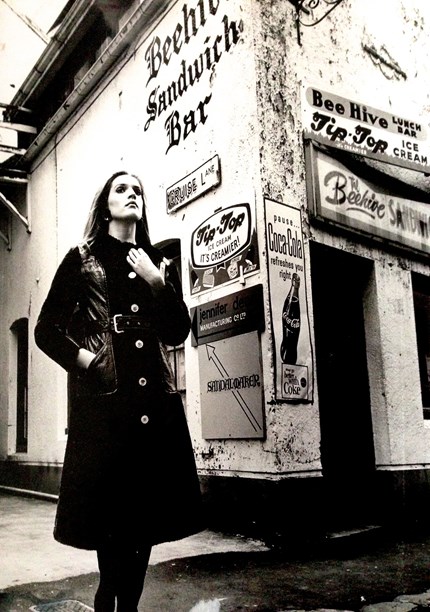
Photo by Max Thomson of Judith Baragwanath modelling a coat in the early 1970s. Photo © Max Thomson.
While at Hill Thomas Jenson, Max met Mort Schreiber who was a freelance photographer from New York. In 1974 they decided to set up their own studio, Foliage, in Freeman’s Bay. Mort had worked in the magazine industry in New York before he came to New Zealand. His experience and technique gave them a unique advantage. "I learnt a lot from Mort. I used to bounce the flashlight into an umbrella, whereas they would use soft boxes in New York. Mort had one made by an engineer in Auckland."
It was their unique lighting that led to a request by a client for a TV commercial. Mort loved making them, he was the director, but although Max was actively involved as first assistant, he wasn’t quite as keen. During their five year partnership they produced TV commercials for a number of clients.
Wanting to concentrate on photography, Max set up his own photography studio, Downunder, in Newmarket. There was plenty of work and his assistants included up-and-coming photographers Kerry Brown and Regan Cameron.
In the early 1980s Max acted on something that had been bothering him for a long time. He was aware of a large body of quality fashion photography - usually funded by models building up their portfolio - that wasn’t being published. 1970s magazines Playdate, Eve and Thursday magazine were no longer in production. It was still early days for Paula Ryan and Don Hope’s Fashion Quarterly and More hadn’t yet started. There was a gap in the market.
Max thought highly of the music magazine, Rip it Up, so he approached the editor Murray Cammick with his proposal. With fashion designer Ngila Dickson on the team, the first issue of ChaCha, a monthly fashion and style magazine, free through fashion stores, was published in May 1983. Kerry Brown photographed the model Lyndon wearing Svelt for the cover and the issue included an interview with photographer Desmond Williams. The photographers didn’t get paid for the editorial photos (although ChaCha paid for film and processing) but they had a free hand. It was an opportunity to experiment and develop their own style while getting great exposure which sometimes led to commercial work.
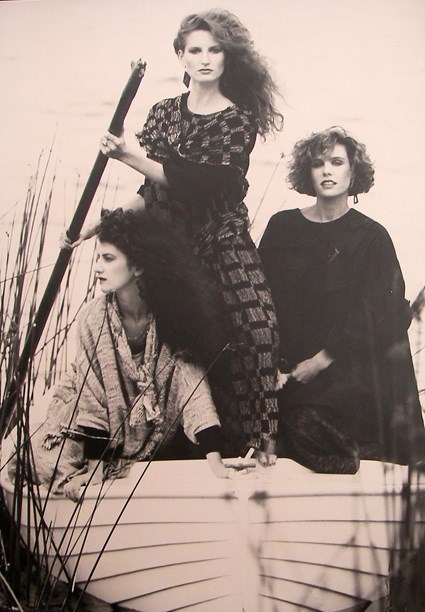
Zambesi ad for ChaCha magazine. Image © Max Thomson.
Max contributed a number of the fashion editorials but realised that he didn’t want to be a publisher so after about 18 months he withdrew his involvement to focus on Downunder. His photographs continued to appear in ChaCha from time to time - either in fashion spreads or in ads for designers such as Adrienne Winkelmann and Scotties.
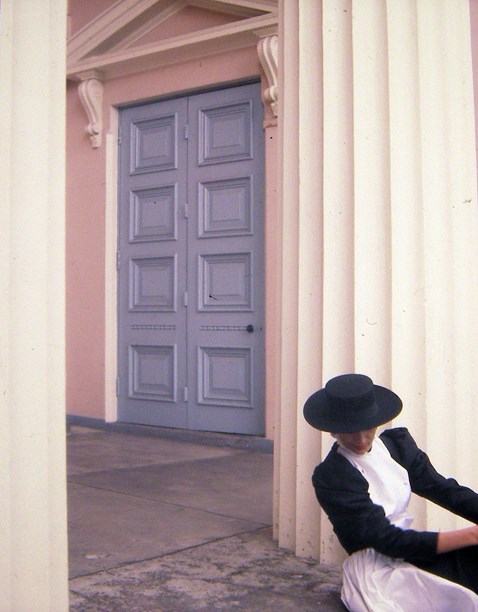
Photo for Adrienne Winkelmann taken at Auckland Museum for ChaCha magazine. Image © Max Thomson.
He was also a contributor to two of the fashion glossies of the day, one real and one fictitious; Fashion Quarterly, which by the late 1980s had become the country’s acknowledged fashion bible and he shot the the covers of Gloss magazine to be used as props on the TV series of the same name.
His work for Fashion Quarterly spanned the 1980s and involved advertising and promotional photography as well as fashion shoots. There was always an edginess and exuberance about his work. Three classic examples were a playful red evening dress spread he shot in 1985, another evening shoot in 1986, photographed at Auckland’s Regent Hotel with Wentworth Brewster’s Grant Chilcott at the piano and, in the same year, a story featuring the creations of high-fashion leather aficionado Brigid Brock.
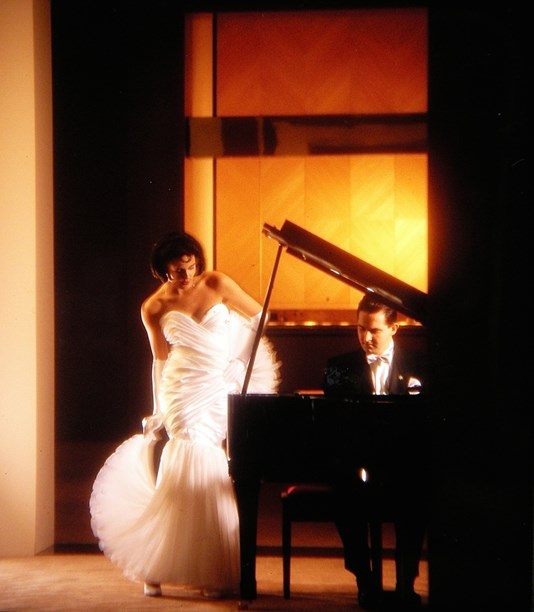
Max Thomson photo for Fashion Quarterly with Charlotte Dawson and Grant Chilcott. Image © Fashion Quarterly.
Max had moved his studio from Newmarket to 62 Ponsonby Road, naming it Studio 62. His TV commercial experience at Foliage led to a new pathway with some of his clients. He was taking stills for Bendon, when it was suggested that he work with the production company Park Avenue on Bendon’s next commercial which led to work on a couple of commercials a year for Bendon and new clients as diverse as Lane Walker Rudkin, TrustPower and Cadbury. He also filmed music videos, including Supergroove’s 'Here comes the Supergroove' in 1992. Max rebranded his business as Mustang Films in 1991, reflecting the increasing amount of commercials he was involved with.

This flyer for Studio 62 reflected Max's move into fashion inspired television commercials. Image © Max Thomson.
Max was also part of the team that filmed the Corbans (later Wella) Fashion Collections for TV and later fashion impresario Pieter Stewart brought Max on board when she started New Zealand Fashion Week in 2001.
Alongside a solid film schedule, Max continued his fashion photography work, fitting in regular photoshoots for his fashion clients until 2004 when at the age of 59, he decided to retire. He put down his camera and picked up a paintbrush and couldn’t put it down.
Max Thomson's photos from the Flash Back exhibition in 2017. Images © Max Thomson.
Max's work in his latest exhibition, Domain Paintings (June 2017 at Black Asterisk Gallery), gives a strong sense of space, with the framing and exposure reminiscent of his fashion photography. Whether he is deploying paint or film it is clear that his experimentation with light continues and his images remain vigorous and open.
Text by Kelly Dix. Banner image © Wella Fashion Collections.
Last published May 2017.